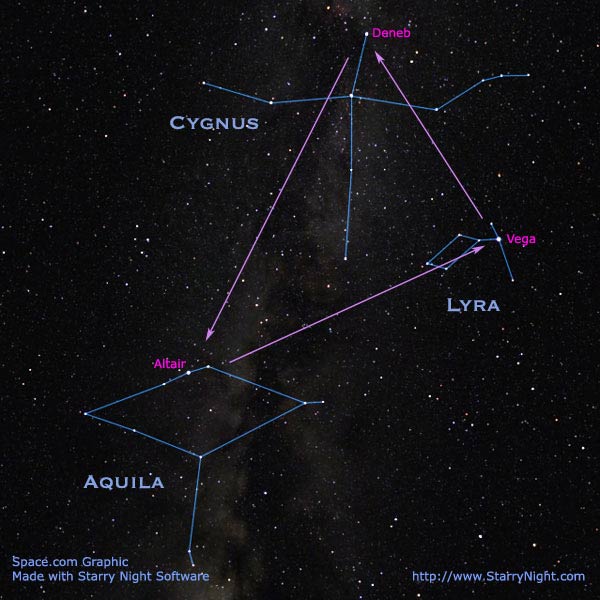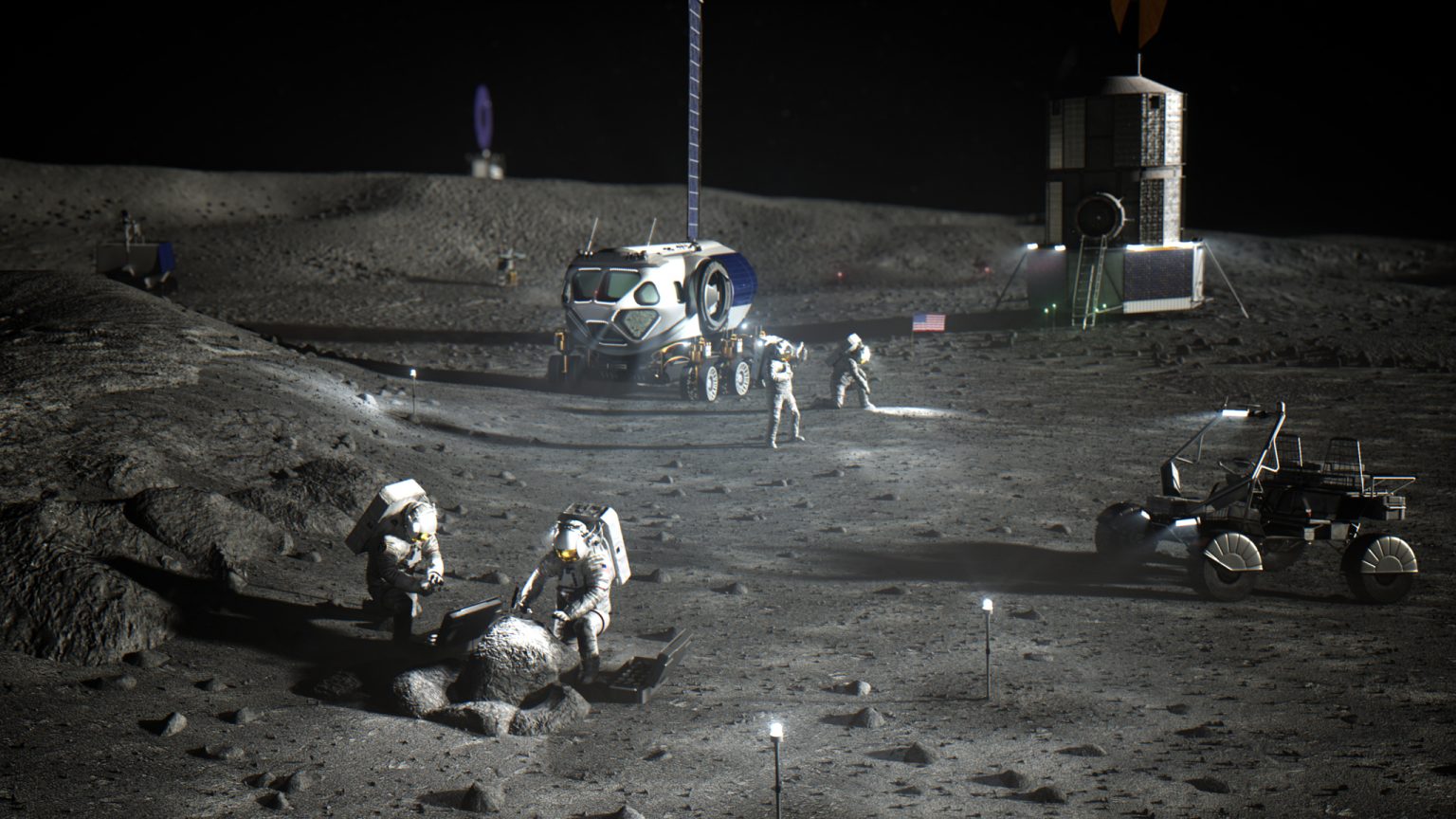
One of my earliest memories of looking up at the night skyhappened when I was about 6 or 7 years old. I was visiting an uncle of mine,and on an early fall evening at dusk he pointed almost directly over our headsat a brilliant, bluish-white star. "See that star, Joey? That's the NorthStar, the brightest star in the sky."
Of course, my uncle was dead wrong on two counts.
First, the NorthStar is not the brighteststar in the sky (although that's indeed a popular misconception). Polaris,the actual North Star, ranks only 49th in brightness.
Second, the North Star would appear directly overhead fromonly one place on the Earth, namely the NorthPole.
In fact, the bright star at which my uncle was pointing,which appears almost directly overhead as darkness falls on late-Septemberevenings, is Vega, in the constellation of Lyra, the Harp. It's not the brightest,but actually the fifth brightest star in the entire sky and the third brightestvisible from midnorthern latitudes (like Chicago and New York), behind Siriusand Arcturus.
Also, as seen from midnorthern latitudes, Vega goes belowthe horizon for only about seven hours a day, meaning that you can see it onany night of the year. Farther south, Vega is below the horizon for alonger interval of time. Conversely, for Alaska, central and northern Canada, as well as central and northern Europe, Vega never sets, and is readily visible on any clearnight.
Vega is the brightest of the three stars forming the large "SummerTriangle," the other two stars being Altair and Deneb. Vega is located 25light years away, has a diameter approximately three times that of our Sun andis 58 times more luminous.
Breaking space news, the latest updates on rocket launches, skywatching events and more!
A solar system in the making?
In January 2002, astronomers at the Harvard-Smithsonian Center for Astrophysics in Cambridge, Mass. announced that features observed in a cloud of dustswirling around Vega may, in fact, be the signatures of an unseenplanet in an eccentric orbit around the star.
Observations of Vega in 1983 with the Infrared AstronomySatellite provided the first evidence for large dust particles around anotherstar, probably debris related to the formation of planets. This discoverylikely inspired the late astronomer Carl Sagan to place a planet orbiting Vegain his novel, "Contact."
"Say cheese"
Vega also holds a rather unique place in the annals ofastronomy as being the first star ever to be photographed. The historicphotograph was made using the daguerreotype process at Harvard Observatory onthe night of July 16-17, 1850. A 15-inch refractor was used, and it still tookan exposure of 100 seconds for Vega's image to register.
Lyra was supposed to represent Apollo's harp. Officially,Lyra is a lyre — a stringed instrument of the harp family used to accompany asinger or reader of poetry, especially in ancient Greece. Six stars form acombined geometric pattern of a parallelogram and an equal-sided triangleattached at its northern corner. Vega gleams at the western point of thetriangle.
North Star of the future
A final note: Because the Earth's axis very slowlyoscillates like that of a spinning top (in a movement called precession), theNorth Pole traces a circle on the sky, pointing to different stars as it movesalong in a circuit that takes about 26,000 years. And 12,000 years from now,the Earth's axis will pointed in the general direction of Vega, which will thenbe the North Star.
I'm sure that will make my uncle very happy.
- Online Sky Maps and More
- Sky Calendar & Moon Phases
- Astrophotography 101
Joe Rao serves as an instructor and guest lecturer at New York's Hayden Planetarium. He writes about astronomy for The New York Times and otherpublications, and he is also an on-camera meteorologist for News 12 Westchester, New York.

Joe Rao is Space.com's skywatching columnist, as well as a veteran meteorologist and eclipse chaser who also serves as an instructor and guest lecturer at New York's Hayden Planetarium. He writes about astronomy for Natural History magazine, Sky & Telescope and other publications. Joe is an 8-time Emmy-nominated meteorologist who served the Putnam Valley region of New York for over 21 years. You can find him on Twitter and YouTube tracking lunar and solar eclipses, meteor showers and more. To find out Joe's latest project, visit him on Twitter.
